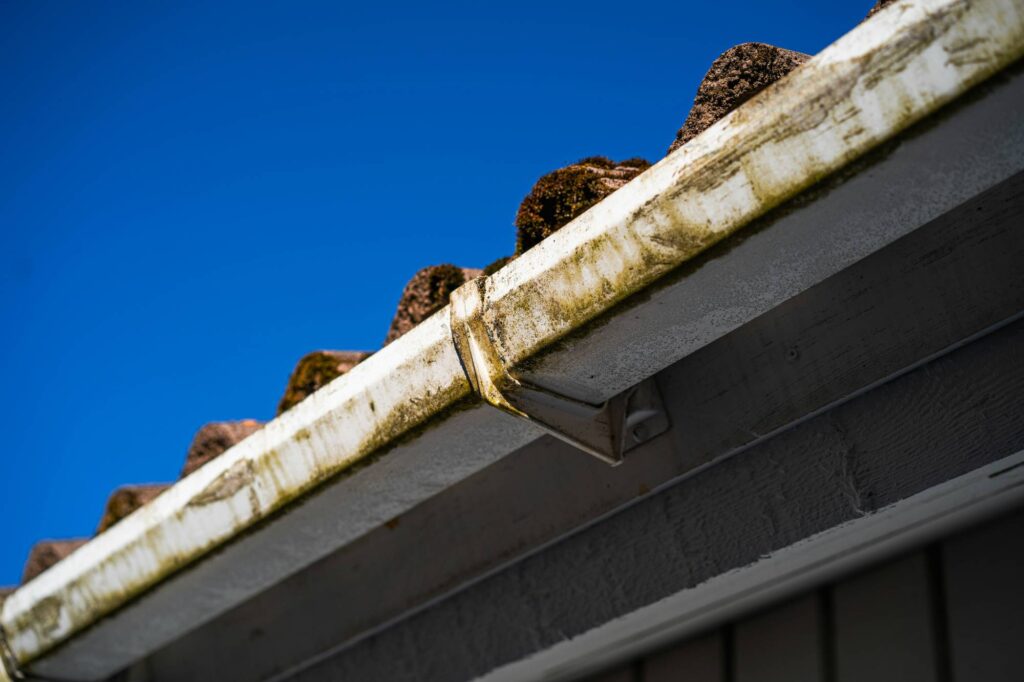
Gutters do more than just move rainwater—they often provide the first visible hints that something’s wrong overhead. When shingles start to fail, flashing wears out, or water isn’t draining properly, the evidence often shows up in the gutter system before it appears anywhere else. While it’s easy to overlook these signs, ignoring them can lead to bigger problems like interior leaks, mold, or costly structural damage.
Here are six gutter-related clues that may indicate it’s time for a roof replacement.
Table of Contents
Key Takeaways✔ Granules in gutters often signal aging shingles and potential roof failure. ✔ Sagging or detached gutters may point to rotting fascia or roof edge damage. ✔ Rust streaks on gutters can indicate water is leaking from the roof system. ✔ Overflow during light rain may reflect worn shingles or blocked downspouts. ✔ Ice dams suggest poor insulation and hidden roof damage beneath shingles. ✔ Shingle debris in gutters is a clear sign of material breakdown on the roof. ✔ Asking the right questions helps determine if roofing replacement is needed. ✔ Ignoring gutter-related clues can lead to costly new roof installation sooner. |
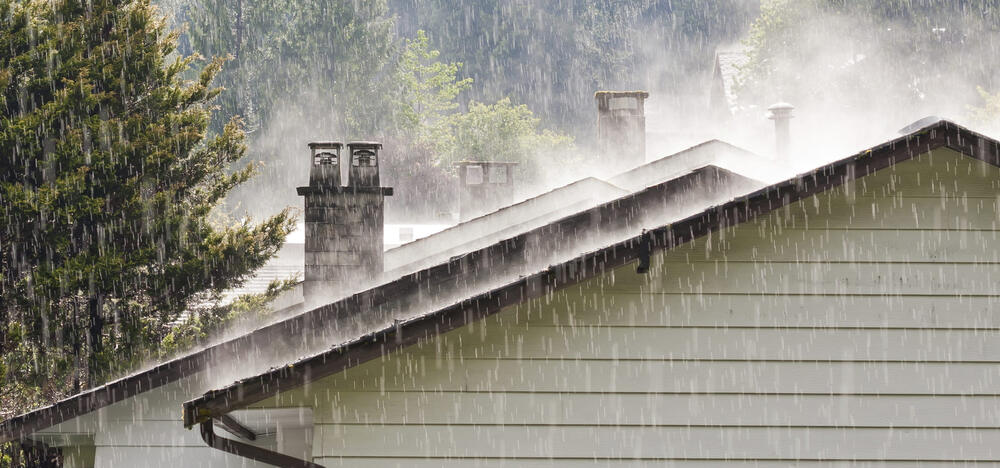
Gutter Clues That Signal It’s Time for a Roof Replacement
1. Granules in the Gutter
Tiny black or gray specks showing up in gutters may not seem like a big deal—but they often point to aging asphalt shingles. These granules protect the roof from sunlight and weather, and once they begin shedding, the roof becomes more vulnerable to damage. Catching this early can help avoid water intrusion and signal when to replace roof materials before bigger issues start.
How Granule Loss Reveals Trouble Above
- Loss of UV Protection: Asphalt shingles rely on mineral granules to block harmful UV rays. Once those granules collect in the gutter, the roof begins absorbing more heat, which shortens its lifespan and may indicate one of the signs you need a new roof.
- Accelerated Shingle Wear: Without granules, shingles dry out faster and become brittle. Cracking and curling often follow, making it easier for water to seep in and trigger the need for roofing replacement.
- Increased Risk of Leaks: Granule loss often exposes the underlayment and nails beneath the shingles. This makes the roof vulnerable to leaks that can spread beyond the attic and affect insulation, ceilings, or walls—often prompting new roof installation.
2. Gutters Pulling Away from the Roofline
When gutters begin to sag or detach from the fascia board, it’s often more than a hardware issue. Water overflow or hidden moisture damage behind the gutter system could be stressing the connection points. This problem can signal deeper issues with the roof’s ability to shed water properly.
What Gutter Separation Suggests
- Water Damage Behind Fascia: If the gutter detaches, water may be backing up and soaking the wood underneath. This can rot the fascia board and indicate how to tell if you need a new roof, especially when paired with visible mold or peeling paint around the eaves.
- Roofline Deterioration: A sagging gutter may result from warped or softened wood at the edge of the roof. This usually happens when shingles no longer direct water correctly, one of the more hidden signs you need a new roof.
- Increased Roof Load: When gutters fill with ice, leaves, or shingle debris, they get heavy. If this happens frequently, it may reflect larger drainage issues—another reason to consider roofing replacement sooner rather than later.

3. Rust Stains and Water Streaks on Gutters
Discoloration along the exterior of a gutter system isn’t just cosmetic. Stains, rust streaks, or mineral deposits often mean water isn’t flowing where it should. These clues may indicate failing seals, worn-out flashing, or more extensive roof problems.
Surface Staining Signs That Point to Roofing Wear
- Flashing Failure: Rust-colored streaks can signal leaks where metal flashing has corroded or lifted. If flashing no longer diverts water properly, it’s often a sign it’s time for new roof installation to restore full protection.
- Persistent Overflow: Water running down the outside of a gutter can stain siding or pool around the foundation. In many cases, this starts with damaged or missing shingles, a clear reason when to replace roof surfaces becomes urgent.
- Clogged or Bent Gutter Sections: Gutter staining also occurs when clogs force water to spill over instead of draining away. These overflows often go hand-in-hand with aging shingles, helping pinpoint how to tell if you need a new roof.
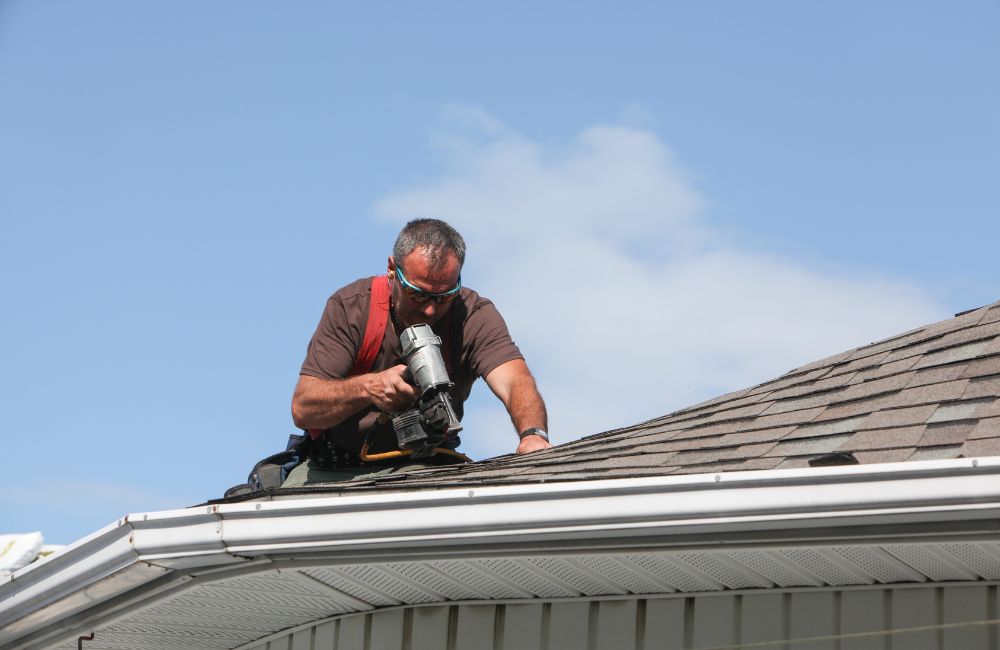
4. Overflowing Gutters During Light Rain
Gutters should handle moderate rainfall with ease. If water spills over the edges during a light shower, something’s off—either the gutters are clogged or the volume of runoff has increased due to roofing wear. This overflow is more than an inconvenience; it may be a red flag.
Causes of Runoff in Guttters
- Worn or Missing Shingles: As shingles break down, water slides off faster and in higher volume, overwhelming gutters. This surge in runoff can mark one of the first signs you need a new roof before interior leaks begin.
- Clogged Downspouts from Roof Debris: Overflow often results from shingle granules or bits of deteriorating material clogging the downspouts. These debris patterns may build gradually, showing clearly how to tell if you need a new roof is necessary.
- Damaged Underlayment or Flashing: Poor water control from the roof can create uneven runoff patterns. If water isn’t guided to gutters correctly, it reflects deeper roofing issues that may require roofing replacement.
5. Ice Dams Forming in Winter
Ice dams can build along the roof edge when warm air from inside melts snow, which then refreezes at the eaves. These thick ridges of ice trap water behind them, often forcing it under the shingles. Over time, this leads to leaks, rot, and mold in the attic.
What Ice Buildup Often Indicates
- Improper Insulation or Ventilation: Ice dams thrive when attic temperatures fluctuate. If the roof can’t regulate heat, moisture damage and water intrusion may occur—both common signals when to replace roof materials should be evaluated.
- Shingle and Underlayment Damage: Trapped water often backs up under shingles, causing them to lift or crack. This exposure is a warning that new roof installation may be needed before spring storms hit.
- Water Stains Indoors: Ice dams don’t just cause exterior damage. Once melted water finds a way in, it can stain ceilings or walls inside—a sure sign of roof failure and one of the unmistakable signs you need a new roof.
6. Shingle Debris in the Gutters
A few stray granules are normal, especially after a storm. But consistent buildup of shingle fragments, nails, or curled edges in the gutters signals more advanced wear. This type of debris suggests the roof can no longer hold up under weather exposure.
Gutter Debris Failures That Reveal Roof Age
- Edges of Shingles Breaking Off: Curled or cracked shingle pieces often end up in gutters during wind or rain. Their presence signals deterioration that commonly leads to full roofing replacement.
- Nails and Flashing Bits: Finding nails or metal fragments may indicate that flashing or other roof components are loosening. This breakdown is one of the stronger indicators of how to tell if you need a new roof before structural issues develop.
Consistent Post-Storm Cleanups: If every heavy rain or windstorm leaves fresh debris in the gutter, the roof’s condition is likely declining fast. Over time, this pattern shows why it may be time for new roof installation to restore the home’s defense against the elements.
What to Ask a Roofer After Spotting Gutter Clues
Once gutter problems start pointing toward potential roof damage, a qualified roofer can help determine whether it’s a minor fix or time for a full roofing replacement. But not all roofing consultations are equal—asking the right questions ensures the inspection covers more than surface-level symptoms.
These six questions can help homeowners get clear, honest answers and make confident decisions moving forward:
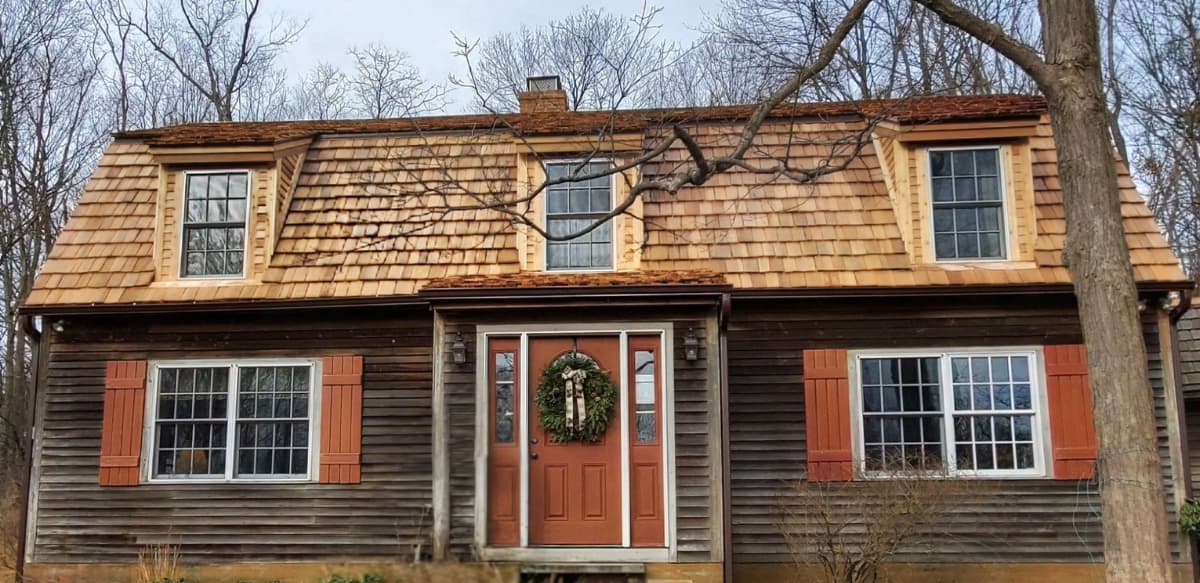
1. How Old Does the Roof Appear Based on Its Condition?
Even without exact records, roofers can estimate age based on wear patterns, granule loss, and shingle flexibility. If the roof shows premature aging, it may point to poor installation or harsh weather exposure. Knowing the estimated age helps determine when to replace roof systems before issues escalate.
2. Is the Granule Loss Severe Enough to Affect Roof Performance?
Granules protect shingles from UV damage and moisture penetration. A roofer should assess whether the granule loss found in gutters is normal shedding or a symptom of advanced deterioration. If it compromises water resistance, it may be one of the early signs you need a new roof.
3. Do the Gutters Show Signs of Structural Stress from Roof Issues?
A sagging or pulling gutter can suggest that the fascia or roof edge is water-damaged or rotting. Ask whether roof runoff patterns are contributing to structural stress on the gutters. A weakened roof perimeter can be a subtle sign of when to replace roof components, especially under heavy rainfall.
4. Has Water Been Getting Behind the Shingles or Flashing?
This question prompts the roofer to inspect the integrity of the underlayment and flashing, not just the surface shingles. If water has made its way underneath, mold, rot, or attic leaks may already be forming. In such cases, new roof installation may be more cost-effective than spot repairs.
5. Can Gutter Debris Be Traced to Roof Material Breakdown?
Roofers can identify whether the debris in gutters—like shingle fragments, nails, or flashing bits—came from environmental damage or from the roof itself failing. If materials are breaking down from the top down, it’s a stronger case for roofing replacement. This insight also confirms how to tell if you need a new roof or if repairs are enough.
6. What Type of Roofing System Would Prevent This From Happening Again?
Once the damage is assessed, it’s helpful to ask what materials or installation upgrades could reduce future issues. A roofer might recommend better ventilation, upgraded shingles, or improved flashing techniques. This question supports smart planning for new roof installation that’s built to last.
Understanding Roof Warranty Coverage After Water Damage
Spotting water-related issues in gutters or along the roofline may raise questions about what’s covered under a roofing warranty. If repairs aren’t covered, homeowners may need to budget for out-of-pocket costs—especially since contractors typically charge between $40 and $60 per hour or provide flat-rate estimates for roofing replacement.
Many homeowners assume roof warranties will cover any problem, but coverage is often limited and comes with strict conditions. To avoid surprises, it helps to understand what a roof warranty typically includes—and what it doesn’t—before moving forward with roofing replacement.
What a Manufacturer’s Warranty Typically Covers
Most manufacturer warranties cover defects in roofing materials, like faulty shingles or underlayment. If water damage results from defective products, the warranty may apply—but only if the roof was installed according to manufacturer guidelines. Understanding this distinction can help determine how to tell if you need a new roof and if coverage will assist with the cost.
Exclusions for Storm and Environmental Damage
Warranties usually don’t cover damage from hail, high winds, or ice dams unless separate storm protection coverage is in place. If water damage results from severe weather, replacement costs will likely fall outside warranty protection. Homeowners should always ask whether storm-related signs—like granules in gutters or lifted shingles—fall under any kind of extended plan.
Transferability to New Owners
Some roof warranties can transfer to a new homeowner within a certain timeframe, which can be useful when buying or selling a home. However, the terms often change—reduced coverage periods or additional fees may apply. It’s important to verify the warranty’s status before assuming coverage applies to roofing replacement needs.
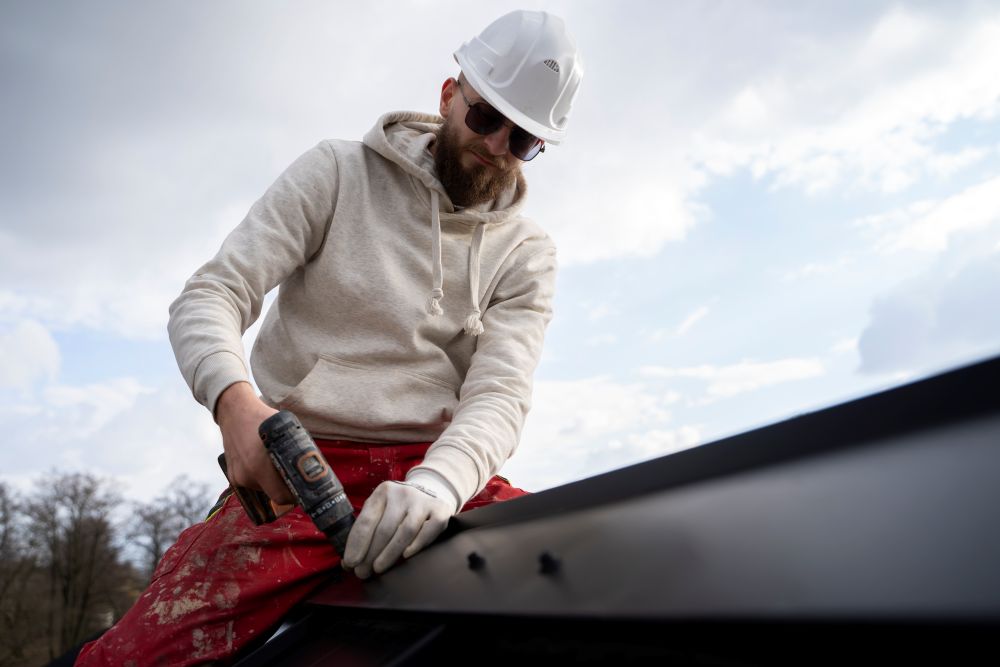
Why Workmanship Warranties Matter
A workmanship warranty is separate from the material warranty and covers issues caused by improper installation. If flashing was installed incorrectly or shingles weren’t nailed properly, water damage could be the result of human error—not product failure. In these cases, a valid workmanship warranty may reduce the cost of a new roof installation.
Most warranties require that the roof be maintained according to basic upkeep standards. Ignoring clogged gutters or skipping inspections can void coverage, even if the problem starts with a manufacturing flaw. Keeping maintenance records is key, especially when signs you need a new roof begin showing up.
How to File a Warranty Claim Correctly
Filing a claim requires proper documentation, including photos, inspection reports, and proof of maintenance. Without warranty coverage, homeowners should be prepared—since the average cost of a roof replacement in the United States ranges from $6,700 to over $80,000, depending on materials, size, and complexity.
Many manufacturers have a limited window for reporting damage, so acting quickly is essential once signs of failure appear. For those noticing gutter overflow or granule buildup, acting fast may help cover part of the cost for a new roof installation.
Frequently Asked Questions (FAQs)
Yes, clogged gutters can trap water against the edge of the roof, causing wood rot and weakening the roof deck over time. This excess moisture may spread into the attic or behind siding, leading to mold and interior water damage. When left unresolved, structural decay is often one of the clearest signs you need a new roof. Addressing gutter issues early can help delay the need for roofing replacement.
Yes, darker-colored roofs tend to absorb more heat, which can accelerate the aging of shingles and underlayment. Over time, this heat exposure can cause materials to dry out or crack, increasing the likelihood of needing a new roof installation. Lighter-colored roofs reflect more sunlight and may last longer in hot climates. While color isn’t the only factor, it can influence when to replace roof materials—especially in sun-prone regions.
Moss and algae retain moisture, which can damage shingle granules and lift the edges, making the roof more prone to leaks. Over time, this weakens the protective layer and allows water to reach the underlayment. If left untreated, moss growth becomes one of the early signs you need a new roof. Regular cleaning and preventive treatments can extend a roof’s lifespan and delay roofing replacement.
Yes, metal roofs shed water more efficiently, which reduces the amount of debris and granule buildup in gutters. This helps minimize overflow, ice dams, and related issues that often point to roof failure. While metal roofs can still develop problems, it’s usually easier to spot how to tell if you need a new roof when dealing with visible rust, seams, or panel shifts. Metal roofing can delay the need for frequent roofing replacement in many cases.
Absolutely. Poor insulation causes uneven roof temperatures, which leads to ice dams and moisture condensation that can damage shingles from underneath. Over time, this hidden damage can cause water to drip into the gutters irregularly or even show up as rust streaks or overflow. These subtle clues often indicate how to tell if you need a new roof—even if the surface appears intact.

Get Reliable Roof Replacement Help from Lyndsey Roofing, LLC
If gutter problems are pointing to something bigger, it’s time to bring in a team that knows how to spot trouble before it spreads. At Lyndsey Roofing, LLC, we’ve helped homeowners throughout Poughkeepsie, NY, protect what matters most with honest inspections, dependable craftsmanship, and full-service roofing replacement. Whether it’s granule loss, leaks, or sagging gutters, our crew gets to the root of the problem and fixes it right the first time.
Don’t wait for water damage to get worse—schedule a roof evaluation with Lyndsey Roofing, LLC today.







